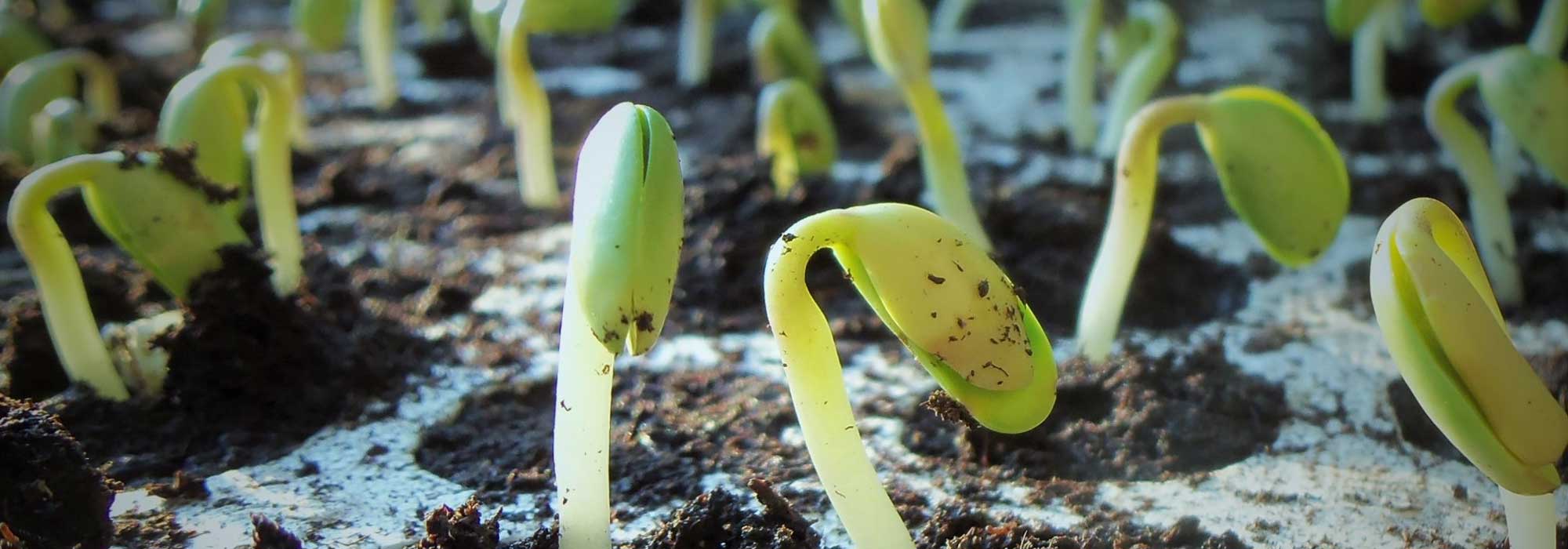
Sowing seeds: everything you need to know, our tips and tricks
to succeed in all your sowing
Contents
Sowing seeds is quite easy, but getting them to germinate can be more complicated, as this success is primarily conditioned by understanding the needs of the seeds.
Indeed, a seed, despite appearances, is alive; it is simply in dormancy and waiting to be in a favourable medium to germinate. Understanding and meeting its needs (water, heat, light) is one of the main factors for successful sowing.
In this advice sheet, you will find the key principles of germination, as well as all the practical aspects: germination capacity, germination duration, stratification, scarification, and the main sowing methods.
The essential elements for germination
1) Water
It is well known that water is essential for life, making it the first crucial factor for the proper germination of seeds. When in contact with water, the seed will first absorb and swell, the protective seed coat (the testa) softens, the cells fill with water, and this triggers the enzymatic reactions that initiate germination. Once the seed begins to come into contact with water, it is essential to keep the medium moist until germination and its transformation into a seedling.
My gardening tips:
- Water your seedlings gently. A common and recurring mistake when sowing is to water with too large droplets. In the case of sowing directly in the ground, this mistake can lead to the formation of a crust, compacting the soil surface and making it difficult for seeds (especially small ones) to break through and germinate easily. For seedlings in trays, a harsh watering can displace the seeds. Use preferably a hand-held sprayer, especially for small seeds. For direct sowing in the ground, equip yourself with a watering can with a fine spout. Finally, in the garden or under a greenhouse, install a watering system with micro-sprinklers.
- For sowing in trays or buckets, you can use a complementary technique: watering by bottom watering. This involves allowing water to rise through the potting soil by capillarity by filling a saucer with water. A good bottom watering lasts at least 15 minutes, after which the tray is removed from the saucer.
- For seeds that take time to germinate (like parsley and, generally, the Apiaceae), I place a damp jute cloth over the sowing. This helps maintain a consistent level of humidity for longer, facilitating germination. Once the seedlings emerge, remove the jute cloth.
- For direct sowing in the ground, be aware that the sun quickly dries the surface of a substrate or light soil, which can be detrimental to seed survival. Remember to shade your sowings, especially in summer, with a shading cloth or overturned crates.
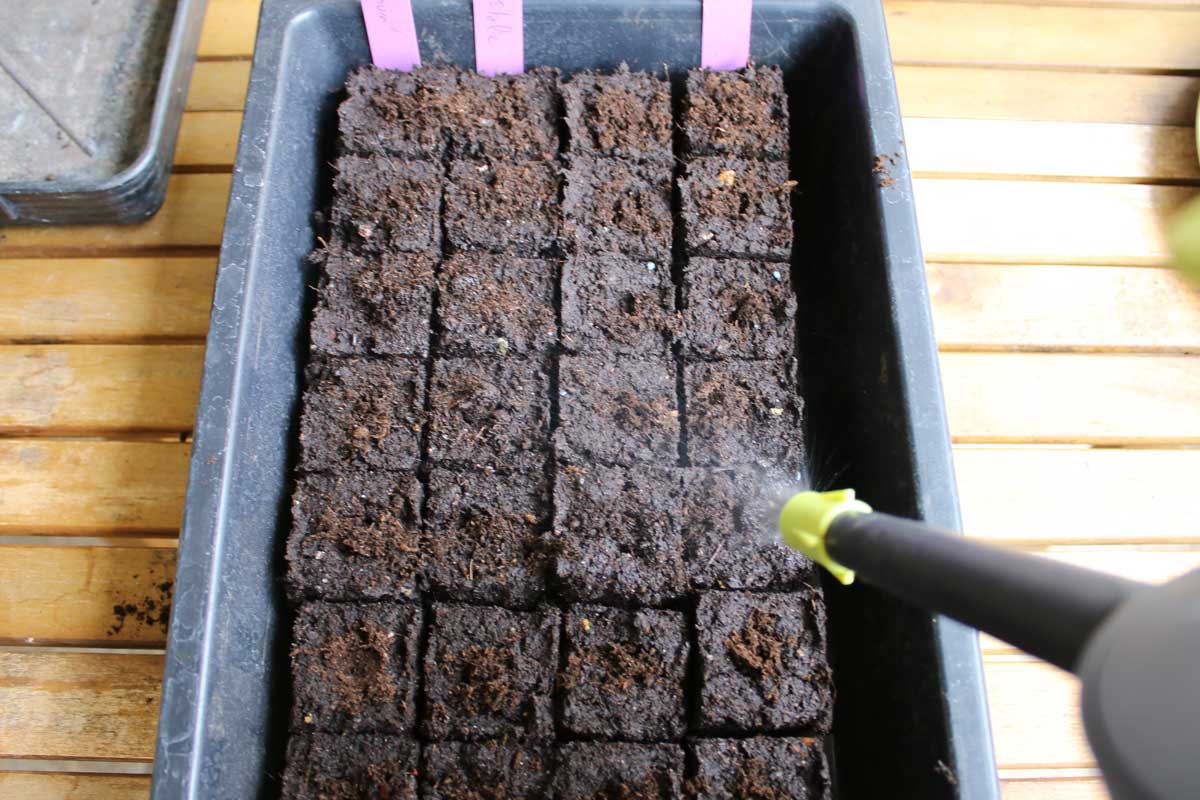
For small seeds, always water gently. A pressure sprayer is very handy for watering with a fine mist.
2) Temperature
Temperature is another determining factor for good seed germination. The closer you reach the optimal temperature (specific to each species), the better the metabolic reactions will occur. To germinate, the seed needs to be within a temperature range that is neither too cold nor too high. To succeed in your sowings, it is important to know these temperature ranges specific to each plant species. This information is usually found on seed packets.
My gardening tips:
- Vegetables from the Solanaceae family (tomatoes, peppers, eggplants) require a fairly high temperature to hasten their germination during a period when outdoor temperatures are not yet sufficient. It is possible to start sowing near a stove, a fireplace, or by using a heating mat or heated propagator.
- Some vegetables germinate poorly in summer; for example, lettuce does not germinate above 27°C, so I replace it with chicories that are less sensitive to heat.
3) Light and Darkness
Light is the last factor that influences germination, but it is less critical than the previous two. Most seeds germinate in darkness; however, there are specific cases where seeds need light to trigger germination, such as basil and foxglove. On the other hand, once the seeds have emerged, some are sensitive to a lack of light and the seedlings become “leggy.” To learn more about this phenomenon, check out our article: “My seedlings are leggy… Why?”
4) Germination Capacity
Germination capacity refers to the lifespan of seeds, which varies by species and also by storage conditions. This duration can range from a few days (Anthurium) to several hundred years (Acacia, lotus). For vegetable species, it generally varies from one year (parsnip) to about ten years (tomato).
My gardening tips:
- I store my packets at room temperature at home to avoid exposure to excessive heat and frost.
- If you are saving your seeds, avoid storing them in airtight glass jars; prefer breathable kraft paper bags instead.
5) Germination Duration
The duration of germination is the average time it takes for a seed to germinate, which varies by species and temperature. Under optimal conditions, this time will be shortened. For vegetables, consult this table summarising the germination capacity and duration of seed germination.
Germination duration can be very short; under optimal conditions, a chicory seed can germinate in 2 days, a radish seed in 3 days, while a parsley seed will take about 20 days. Among ornamental plants, there are even longer periods; most perennials that require vernalisation take time to germinate: Astrantia, hellebores, and peonies take two to three months to germinate. For trees, it can be even longer, with Davidia taking two years to germinate. The Rehderodendron macrocarpum will take 5 years to germinate!
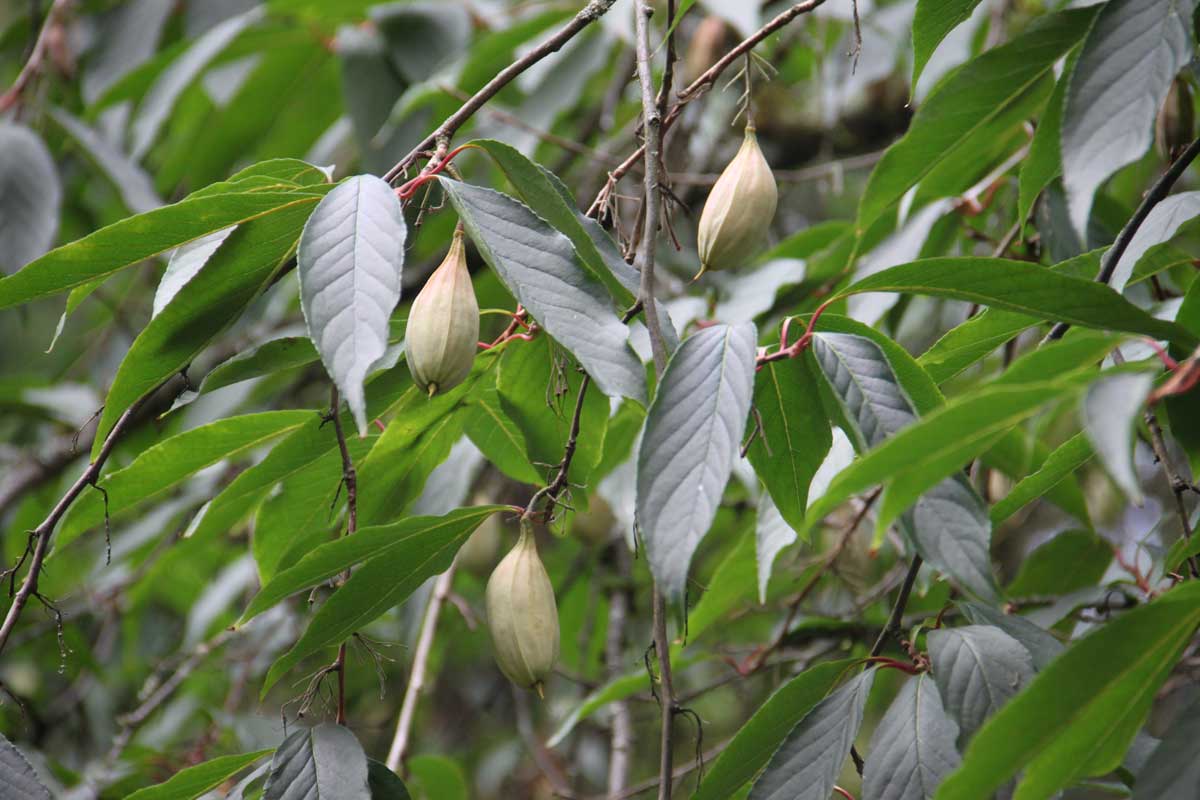 Not in a hurry, the Rehderodendron macrocarpum will take 5 years to germinate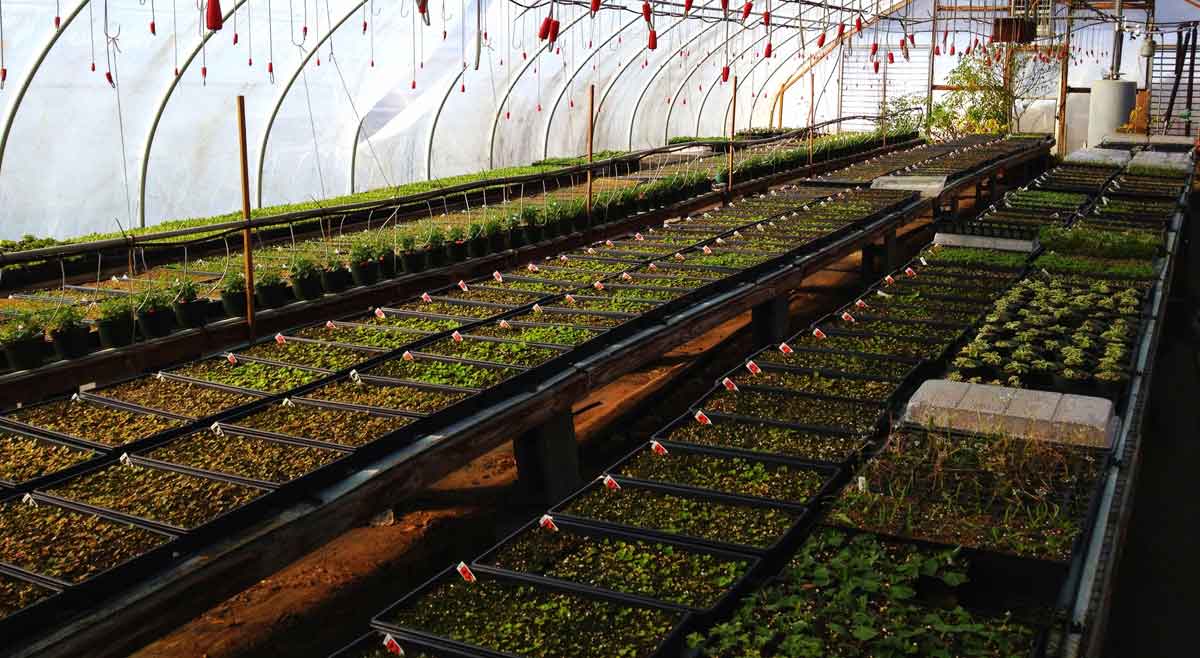
Sowing in a greenhouse allows for better control of various parameters. Even a small greenhouse is very handy for amateur gardening.
3) Direct Sowing
This type of sowing is done directly in place in the open ground. It concerns most species of vegetables, particularly root vegetables, large seeds like beans, broad beans, peas, as well as lamb’s lettuce and spinach. Many flowers can also be sown this way. The advantage of direct sowing is that plants adapt very well to their location, and their roots are not disturbed by transplanting. In the vegetable garden, leafy vegetables are less likely to bolt prematurely.
4) Nursery Sowing
Nursery sowing is done directly in the open ground in the vegetable garden, with or without cover. When the young plants reach the desired stage, they are transplanted to their final location. This type of sowing is done from late winter to autumn. A sunny spot is sought in spring and autumn, while a more shaded area is preferred in summer.
The goal is to sow densely and then select the best vegetables for transplanting. This type of sowing concerns most vegetables: beetroot, chicory, cabbage, annual flowers, endive, lettuce, onion, and leek. The advantage is that it allows for the selection of the best plants and the removal of the weaker ones.
5) Choosing the Right Substrate
For vegetable plants, a special sowing substrate is sufficient to germinate the plants.
Regarding ornamental plants, it is important to have sufficiently draining substrates that can be mixed with sand, perlite, or vermiculite. Some examples:
- For most annual plants and herbs, use a mixture of half potting soil and half perlite or vermiculite.
- The hollyhock germinates well in a mixture of one-third fine potting soil, one-third vermiculite (or perlite), and one-third fine sand.
- Scabious is sown in a light mixture of turf (70%) and sand (30%).
- Black-eyed Susan is sown in a light mixture of turf and sand in equal parts.
Read also
Vernalisation: what is it?Preventing Germination Issues
1) Damping off
Damping off is a problem caused by pathogenous fungi that attack seeds just sown or when they are at the seedling stage. High and constant humidity is the main factor that favours this disease.
My gardening tip:
For indoor sowing, it is possible to sprinkle the seed tray with crushed charcoal or ground cinnamon, which is much less messy and just as effective. Put a little in the palm of your hand and then blow onto the seed tray (be careful of your eyes).
2) Checking the germination rate of your seeds
Check from time to time the germination of your seeds by testing a few in a germinator or on cotton soaked in water, for example, at the end of winter, before spring sowing.
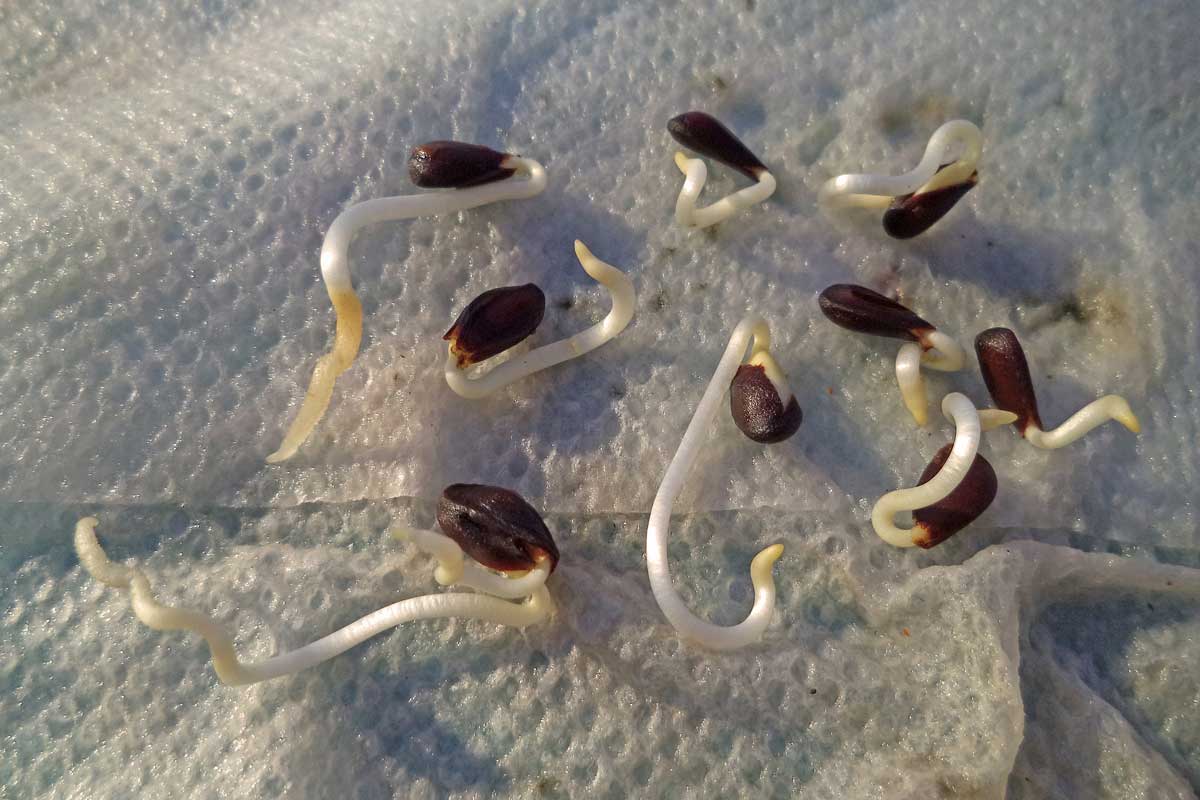
Check the germination rate of your seeds once a year
- Subscribe!
- Contents
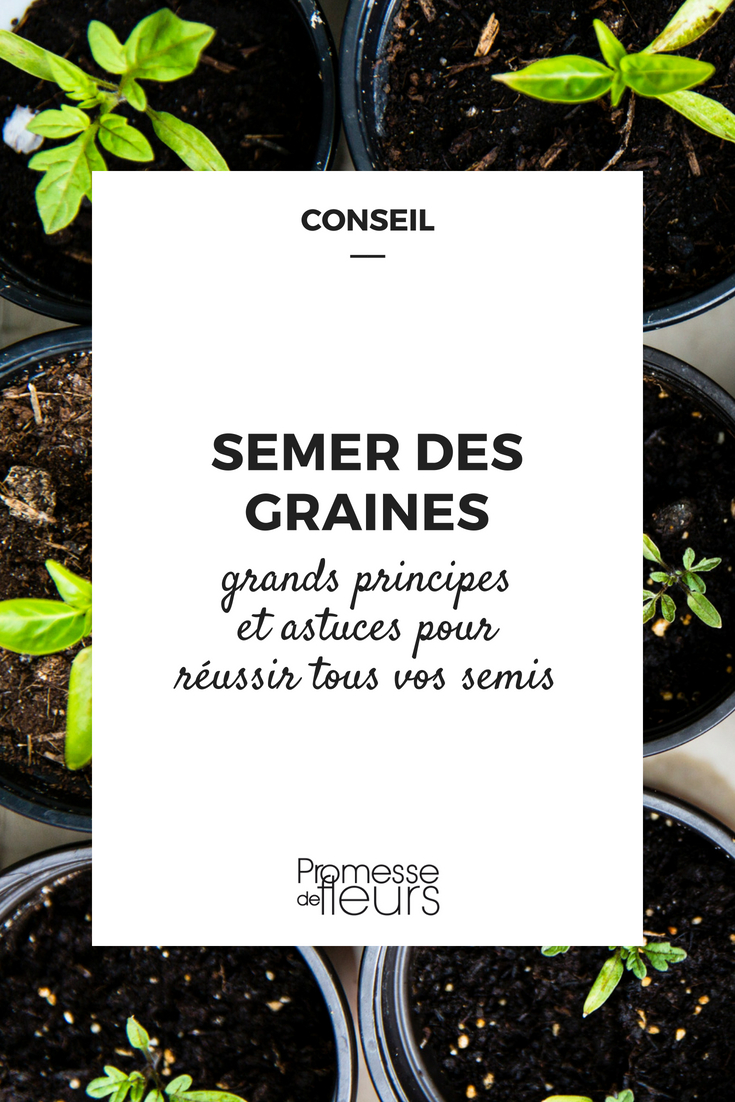































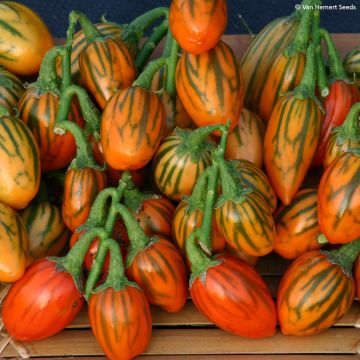
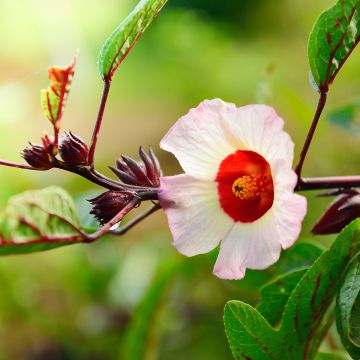
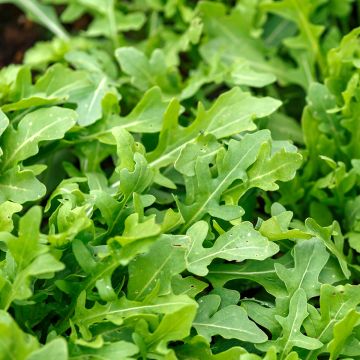
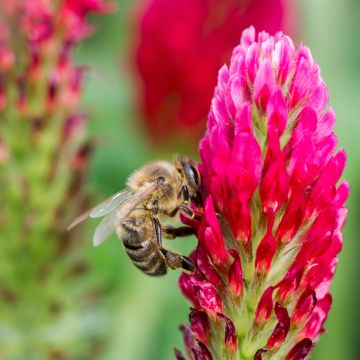


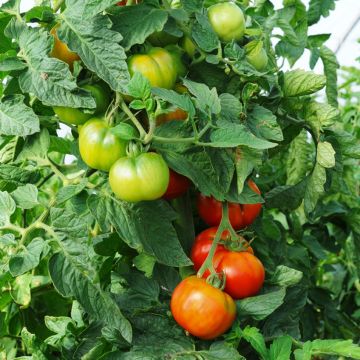
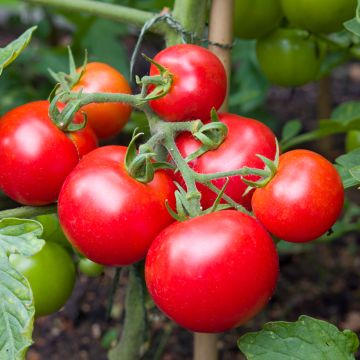
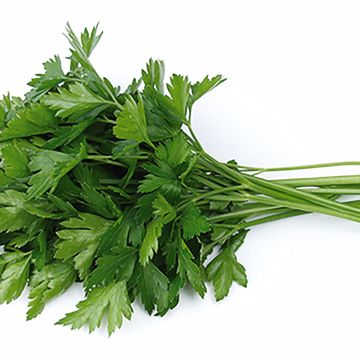
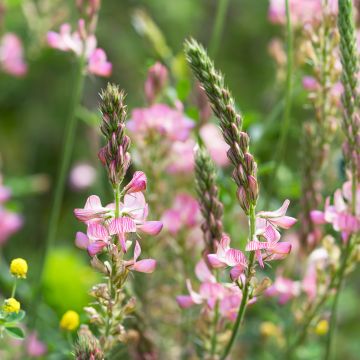
Comments